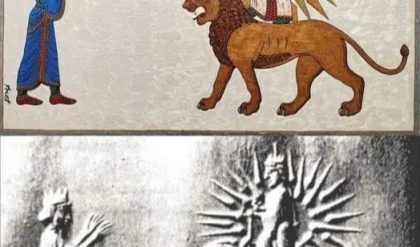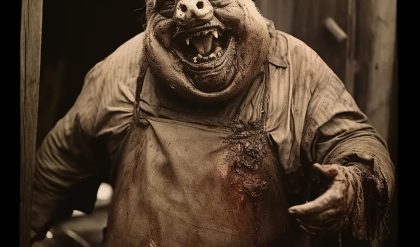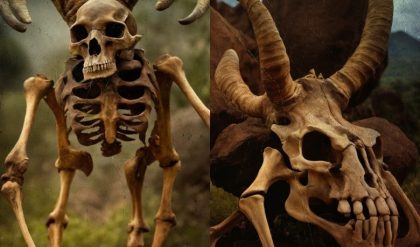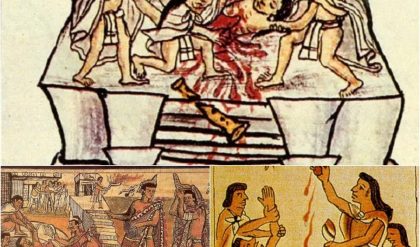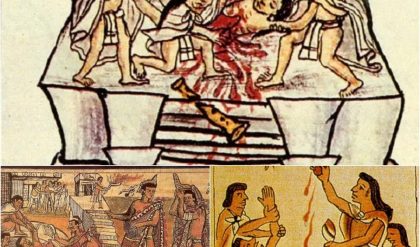The ancient world still holds countless mysteries, some of which are truly terrifying. A recent video explores eerie and chilling discoveries made by archaeologists, shedding light on forgotten rituals, tragic disasters, and haunted places from the past. These findings remind us that the history we uncover isn’t always majestic or heroic but is often dark, unsettling, and thought-provoking.
The Jaguar God Cave Beneath Chichen Itza

The video begins with the story of the Jaguar God Cave, a long-forgotten site hidden beneath the Mayan city of Chichen Itza in Mexico. This mysterious cave was initially discovered by accident in 1966, when a farmer stumbled upon it. Archaeologist Victor Segovia Pinto visited the site shortly afterward but chose not to excavate it. Instead, he ordered the entrance to be sealed off, leaving the cave undisturbed for fifty years.
In 2018, National Geographic explorer Guo Deanda reopened the Jaguar God Cave and embarked on an expedition to explore its secrets. What Guo found was extraordinary and chilling: ornate incense burners, decorative plates, ceremonial vases, and, most hauntingly, piles of human bones. To reach the hidden ceremonial chamber, Guo had to crawl through narrow tunnels, and once he entered the ancient space, he was overwhelmed with emotion. Realizing that he was standing in a place untouched since the height of the Mayan civilization, surrounded by the bones of those who had been sacrificed, he reportedly began to cry. It was a stark reminder of the Mayan people’s connection to both life and death and their belief in offerings to the gods.
Skeletons in Switzerland: A Mystery Underwater
The video then moves on to an eerie discovery made in Switzerland in the 1960s. At the bottom of a river near a collapsed bridge, archaeologists unearthed twenty human skeletons, along with evidence of a catastrophe. There were cracked skulls, broken bones, and shattered wooden beams surrounding the site, leaving scientists puzzled to this day.
While the exact circumstances of the deaths remain a mystery, two possible explanations have been considered. One theory suggests that a tsunami-like wave may have destroyed the bridge and swept the victims to their tragic fate. Another theory hints at the possibility of mass human sacrifice, with the skeletons belonging to people who met their end in a ritualistic offering. The true story behind these bones is still unknown, but the grim imagery of their demise lingers.

Pompeii’s Unfinished Escape: Skeletons on the Beach
Another chilling discovery took place in Pompeii, a city forever frozen in time by the catastrophic eruption of Mount Vesuvius in AD 79. The image of bodies preserved in ash is one that haunts popular culture, but recent discoveries have revealed even more heart-wrenching stories of people trying desperately to escape.
Archaeologists found evidence of some residents who attempted to flee the volcanic eruption by heading towards the sea. The skeletons of these individuals were unearthed on a beach, their journey towards safety tragically cut short by the merciless power of nature. This discovery paints an even more terrifying picture of Pompeii—where the destruction not only trapped those within the city but also pursued those who tried to flee to what they believed was freedom. It is a sobering reminder of the fragility of human life when faced with nature’s fury.
The Palace of Blood and the Haunted Estate
The video ends by exploring a few more locations that bring a shiver to the spine. One such place is an ancient palace in Benin, said to have been built with the blood of Voodoo sacrifice victims. The palace stands as a symbol of power, but also of fear, with its foundations literally soaked in human life, a testament to a terrifying aspect of Voodoo ritual practice.
Another haunted site discussed is an abandoned estate on the island of Nevis, rumored to be home to restless spirits. The eerie atmosphere of this estate, combined with tales of ghostly encounters, paints it as a place that even the bravest might hesitate to explore. The spirits are said to be those who were wronged in life and now linger, unable to find peace, contributing to Nevis’ reputation as a place touched by the supernatural.
History’s Dark Side: Reflections on These Terrifying Discoveries
These discoveries are a stark reminder that the past isn’t just about empires, inventions, and cultural achievements; it’s also filled with stories of struggle, fear, and sacrifice. The Jaguar God Cave tells of rituals involving human lives offered to the gods, hidden away until uncovered by modern explorers. The skeletons beneath a Swiss river hint at a disaster that claimed many lives or perhaps a mass ritual that demanded blood. The remains found in Pompeii illustrate a desperate attempt to flee a force of nature that could not be escaped. The haunted places in Benin and Nevis show that the human stories of sorrow and suffering can linger long after the people themselves have gone.
These findings are as captivating as they are frightening, offering a glimpse into the harsh realities faced by ancient people—realities that are far removed from the romanticized notions we often have of the past. They also challenge us to think about how history is written: Who tells these stories, and whose voices are heard? How many such dark truths have yet to be uncovered, sealed away beneath the earth or hidden behind legends?
For every grand monument or celebrated victory in the historical record, there are countless stories of loss, sacrifice, and hardship. These discoveries force us to confront those darker parts of humanity’s past—a past that is complex, often brutal, and always deeply human. In doing so, they remind us that the study of history is not just about remembering what is comfortable and inspiring but also about understanding and respecting the lives of those who came before us, even in their most vulnerable and terrifying moments.
